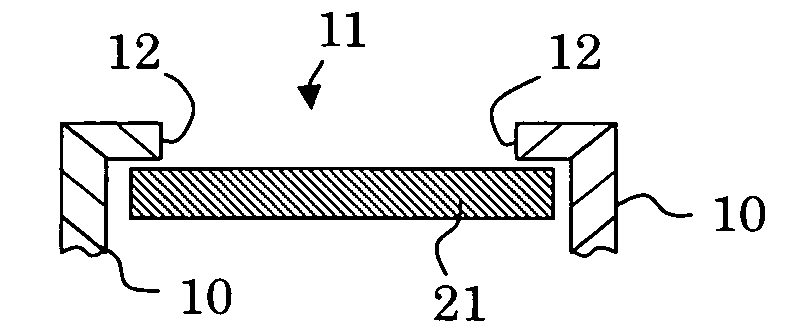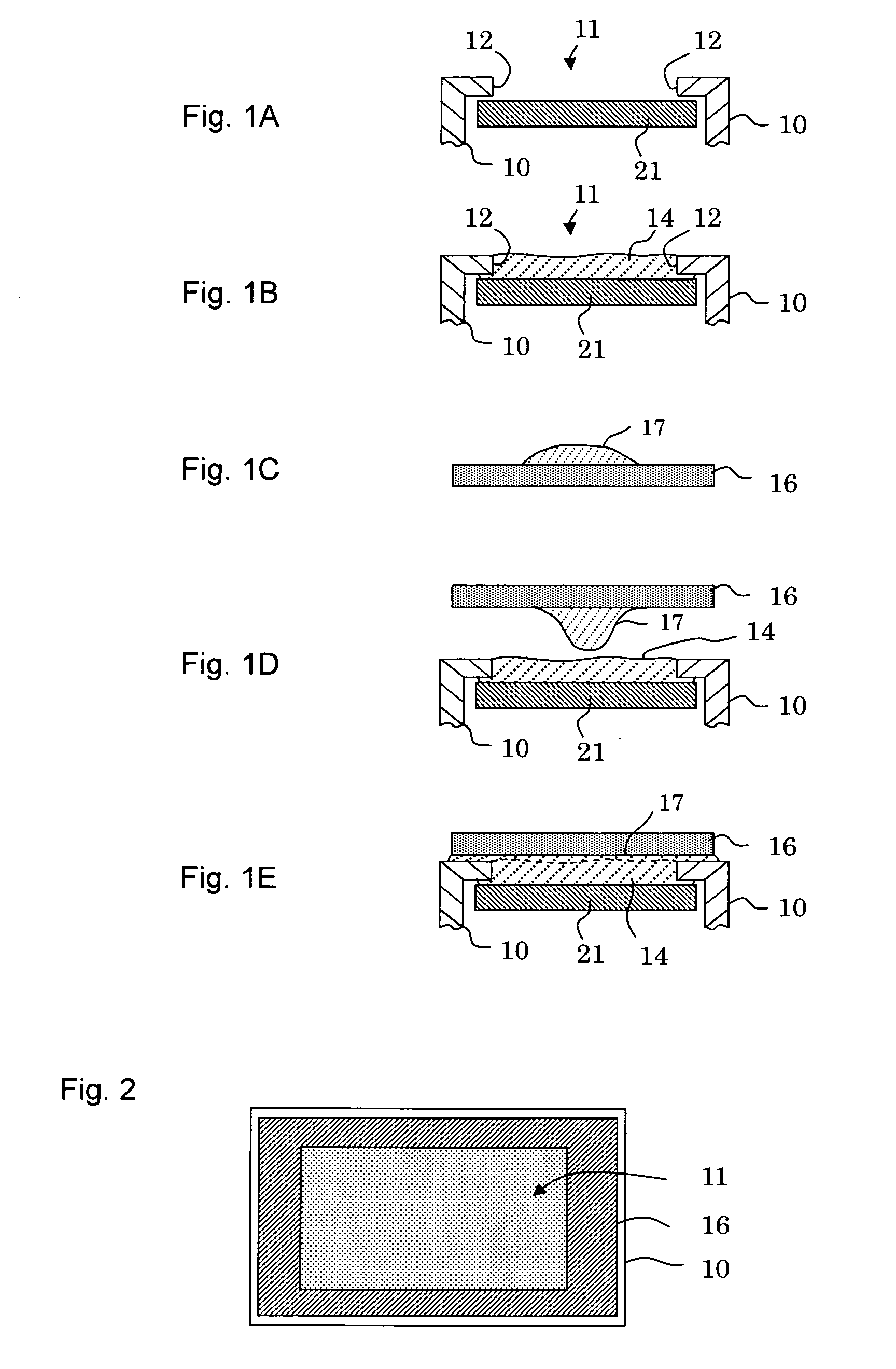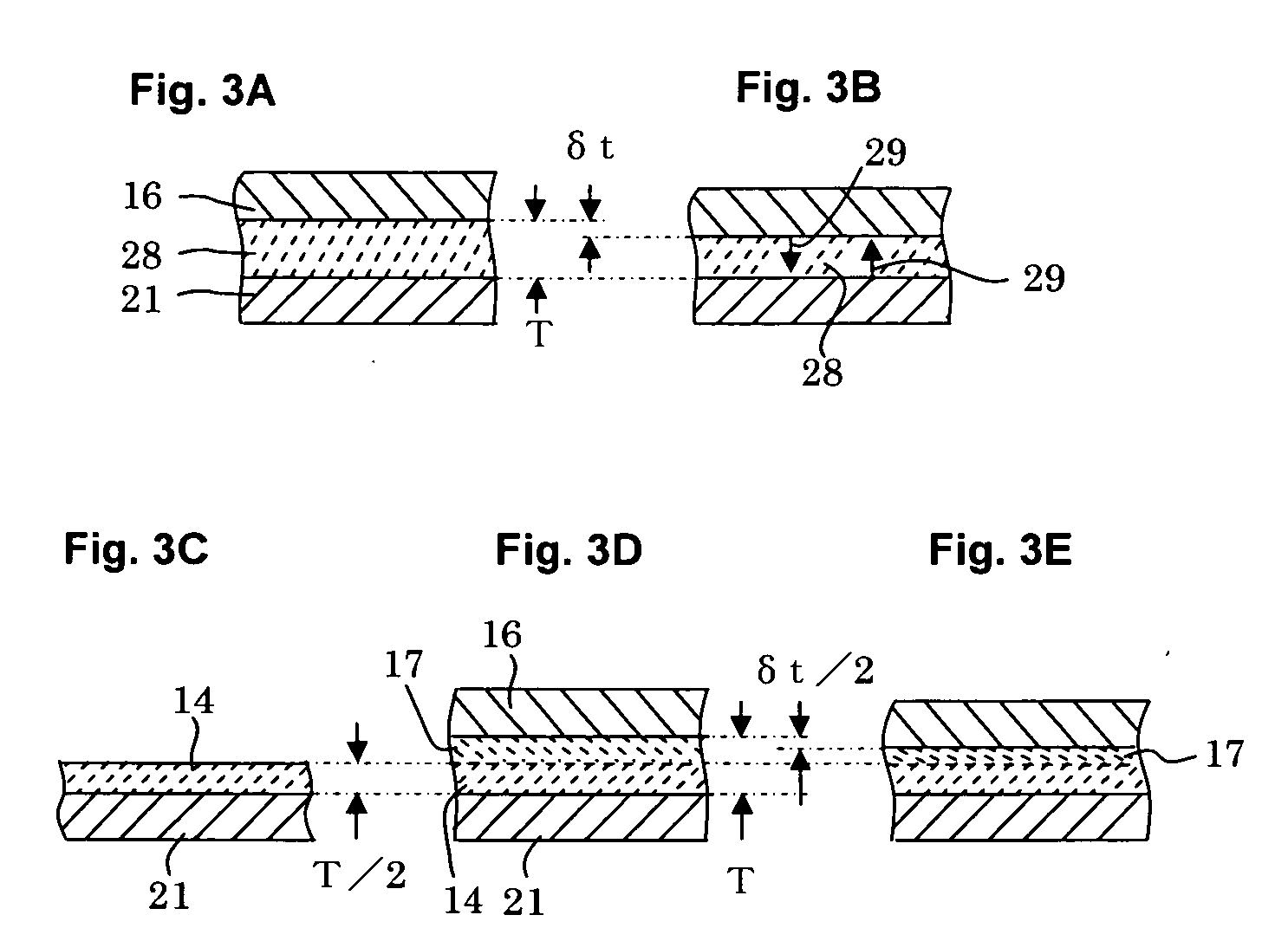Manufacturing method for a display device
a display device and manufacturing method technology, applied in non-linear optics, instruments, other domestic objects, etc., can solve the problems of display surface darkening, and inability to perform backlight maintenan
- Summary
- Abstract
- Description
- Claims
- Application Information
AI Technical Summary
Benefits of technology
Problems solved by technology
Method used
Image
Examples
embodiment 1
[0042]The manufacturing method for a display device according to this embodiment is described with reference to FIGS. 4A to 4E. FIG. 4A illustrates a cross-sectional structure of a liquid crystal panel 8 and the frame body 10, which illustrates a disposing step. In the liquid crystal panel 8, an upper substrate 1 made of glass is bonded to a lower substrate 2 made of glass to opposed to each other through a sealing material 4, and a liquid crystal layer 3 is formed therebetween. A TFT matrix array is formed on an inner surface of the upper substrate 1, and a color filter is formed on an inner surface of the lower substrate 2. Aright side of the upper substrate 1 protrudes compared with the lower substrate 2, and a bottom surface of the protruding portion is mounted with a driver IC 7 for driving the TFT array by a COG method. An upper polarizing plate 5 and a lower polarizing plate 6 are bonded to an outer surface of the upper substrate 1 and an outer surface of the lower substrate ...
embodiment 2
[0049]The manufacturing method for a display device according to this embodiment is described with reference to FIGS. 5A to 5D and FIGS. 6A to 6D. FIG. 5A illustrate a cross-sectional structure of the liquid crystal panel 8 and the backlight 9, which illustrates a disposing step. The liquid crystal panel 8 is similar to that of FIG. 4A of Embodiment 1, and hence its description is omitted. FIG. 5B is a cross-sectional view illustrating a state in which a double-sided tape 19 is attached to a top surface of an upper substrate 1 of the liquid crystal panel 8. The double-sided tape is attached to a periphery of the top surface of the upper substrate 1 of the liquid crystal panel 8. FIG. 5C is a cross-sectional view illustrating a state in which the upper substrate 1 of the liquid crystal panel 8 and the frame body 10 are bonded to each other with the double-sided tape 19. The double-sided tape 19 prevents the adhesive from leaking out from the gap between the frame body 10 and the liqu...
embodiment 3
[0054]The manufacturing method for a display device according to this embodiment is described with reference to FIGS. 7A to 7D and FIGS. 8A and 8B. FIG. 7A is a cross-sectional view illustrating a state in which the liquid crystal panel 8 is disposed in proximity to the opening end portion 12 of the frame body 10, which illustrates a disposing step. FIG. 7A is similar to FIG. 4A of Embodiment 1, and thus its description is omitted. FIG. 7B is a cross-sectional view illustrating a state in which an adhesive dam 18 made of a third adhesive is formed between the opening end portion 12 and the top surface of the upper polarizing plate 5 of the liquid crystal panel 8. As the third adhesive, a UV curable adhesive having viscosity of 10,000 to 50,000 mPa·s is used. The adhesive dam 18 is made so that the adhesive does not leak out from the gap between the frame body 10 and the liquid crystal panel 8 when the first adhesive is applied. The adhesive dam 18 is formed so as to cover at least t...
PUM
| Property | Measurement | Unit |
|---|---|---|
| Fraction | aaaaa | aaaaa |
| Fraction | aaaaa | aaaaa |
| Viscosity | aaaaa | aaaaa |
Abstract
Description
Claims
Application Information
 Login to View More
Login to View More - R&D
- Intellectual Property
- Life Sciences
- Materials
- Tech Scout
- Unparalleled Data Quality
- Higher Quality Content
- 60% Fewer Hallucinations
Browse by: Latest US Patents, China's latest patents, Technical Efficacy Thesaurus, Application Domain, Technology Topic, Popular Technical Reports.
© 2025 PatSnap. All rights reserved.Legal|Privacy policy|Modern Slavery Act Transparency Statement|Sitemap|About US| Contact US: help@patsnap.com



